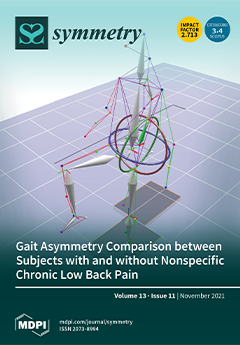Previous studies on the synchronization behaviors of neuronal networks were constructed by integer-order neuronal models. In contrast, this paper proposes that the above topics of symmetrical neuronal networks are constructed by fractional-order Hindmarsh–Rose (HR) models under electromagnetic radiation. They are then investigated numerically.
[...] Read more.
Previous studies on the synchronization behaviors of neuronal networks were constructed by integer-order neuronal models. In contrast, this paper proposes that the above topics of symmetrical neuronal networks are constructed by fractional-order Hindmarsh–Rose (HR) models under electromagnetic radiation. They are then investigated numerically. From the research results, several novel phenomena and conclusions can be drawn. First, for the two symmetrical coupled neuronal models, the synchronization degree is influenced by the fractional-order
and the feedback gain parameter
. In addition, the fractional-order or the parameter
can induce the synchronization transitions of bursting synchronization, perfect synchronization and phase synchronization. For perfect synchronization, the synchronization transitions of chaotic synchronization and periodic synchronization induced by
or parameter
are also observed. In particular, when the fractional-order is small, such as 0.6, the synchronization transitions are more complex. Then, for a symmetrical ring neuronal network under electromagnetic radiation, with the change in the memory-conductance parameter
of the electromagnetic radiation,
and
, compared with the fractional-order HR model’s ring neuronal network without electromagnetic radiation, the synchronization behaviors are more complex. According to the simulation results, the influence of
and
can be summarized into three cases:
,
and
. The influence rules and some interesting phenomena are investigated.
Full article





